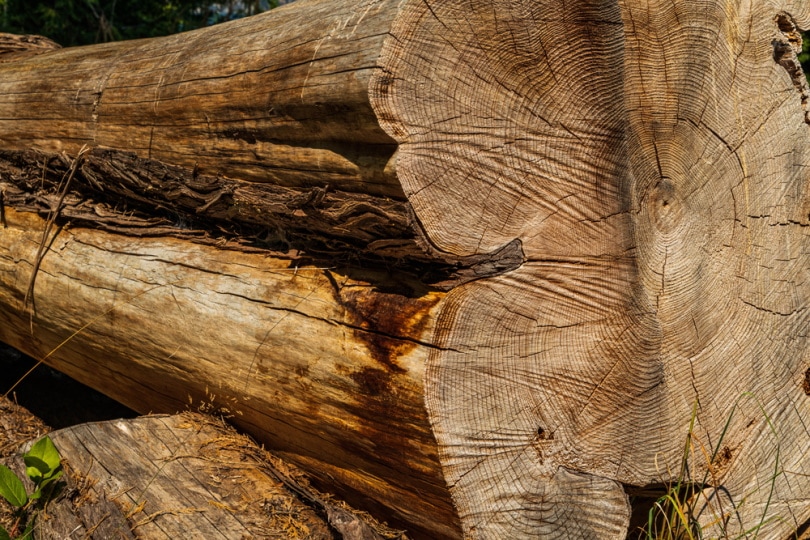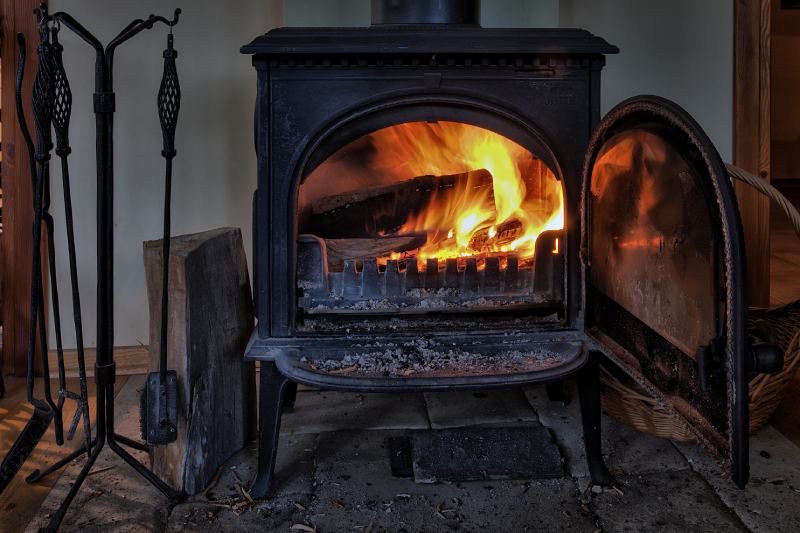Can You Burn Cedar in a Fireplace? Facts & FAQ
-
Kristin Hitchcock
- Last updated:

Technically, cedar wood can burn in a fireplace or wood-burning stove. However, we do not recommend it for this purpose. Cedar wood is loaded with oils, which can become volatile. Typically, incidents won’t occur the first time you burn cedar in a fireplace. However, these oils are released from the wood when burned and stick around.
Therefore, they can build up over time until there is enough for combustion. At this point, they can create a small explosion of heat. While not typically deadly, this can harm your fireplace, people, and pets.
Cedar may be an exciting wood to burn because of its pleasant smell. However, this smell is caused by the oil inside the wood, which can be dangerous. Therefore, we do not recommend burning cedar in your home in large amounts.
Instead, it should only be burned in an open area where smoke and oil buildup are less of a concern. Outside, these oils will be carried away and spread by the elements. In an enclosed fireplace, they will build up and can be damaging.
 Is Cedar Smoke Toxic?
Is Cedar Smoke Toxic?

Because cedar smoke has a bit of a strange smell compared to other woods, it is often thought to be toxic. However, this has never been proven to be the case. Therefore, cedar smoke is considered safe to inhale, so you won’t have a problem using this wood outside in a fire.
However, the main concern is that the small pockets of oil will catch or build up upon the edges of the pit. When these are caught on fire in high amounts, they pop like grease. Of course, when you have a significant buildup, this can be pretty dangerous. Therefore, cedar shouldn’t be used in a fire that you plan on sitting next to.
With that said, there are some plants that you should not inhale. These include poison oak and sumac, which can contain irritants and cause reactions inside the lungs—not including any of the skin the smoke touches. Many treated woods also contain chemicals that are unsafe to inhale, so they should be avoided, as well.
What Wood Cannot Be Burned in a Fireplace?

We’ve already stated that you should avoid burning cedar in a fireplace. However, there are other sorts of wood that should not be burned, as well.
For instance, treated and manufactured wood should be avoided. Usually, these woods contain chemicals that can be pretty dangerous when inhaled as smoke. Therefore, it is best to avoid burning them altogether, including outdoors. These woods include coated and sealed woods, painted wood, and pressure-treated wood.
For instance, some older woods can contain CCA, which makes the wood resistant to rot. However, this chemical contains arsenic, which is released into the air when burned. Arsenic is a known cancer-causing agent.
Greenwood should also be avoided. It may be tempting to skip the seasoning process altogether, but this isn’t recommended. This wood isn’t necessarily dangerous, but it is difficult to burn. Because it contains so much moisture, it won’t burn like dry wood. Plus, it can lead to a build-up of creosote, tiny pieces of unburnt wood.
These can build up in your chimney and catch fire after they dry. As you can imagine, this is a hazard, as they can randomly combust and cause out-of-control fires.
Any driftwood from the ocean should be avoided, too. This wood contains a high salt content after soaking in the ocean water. When burned, this salt will turn into chlorine, which is toxic when inhaled. Usually, outdoors is okay for burning driftwood, as the open air makes toxic smoke less of an issue. However, many seaside areas have laws prohibiting driftwood from being burned anywhere.
You should also avoid the most poisonous woods, including poison ivy. These plants can often cause a reaction when inhaled, similarly to when they are touched. However, in this case, the reaction is inside your lungs. As you can imagine, this can be deadly in some circumstances.
Conifer wood should be avoided if possible. At the very least, you shouldn’t use their wood as the primary food source for indoor fireplaces. Underneath their bark, these woods contain resin, which is highly flammable. Conifer wood is excellent for starting a fire for this reason. However, if used in large amounts, this pitch can cause sparking and crackling, sending sparks around that can be potentially dangerous.
Outside, this is less of an issue. However, indoors, you can potentially start unintended fires.
“Fake” wax logs often found in grocery stores should also be avoided. These are made of sawdust and held together with wax. However, they burn extremely hot when enclosed in a fireplace or stove. Therefore, they can make too much heat and even catch things near them on fire.
Does Burning Cedar Cause Creosote?
Because cedar has a high oil content, it can cause creosote at a rate higher than other woods. However, that isn’t the main reason you should avoid burning cedar. Instead, your main worry should be the oils catching fire and combusting. If the oil is allowed to build up, this can cause a pretty big fire.
However, even if you’ve never burned cedar, setting a log on fire can cause lots of popping and crackling. This process can send sparks everywhere and cause other fires. Plus, they can burn anyone who comes too close, too.
If you know this will occur, burning cedar can be done outdoors if it needs to be disposed of. However, this isn’t something you burn inside simply due to the spread of sparks. We wouldn’t recommend this for a fire that you plan on sitting close to.
 In Conclusion
In Conclusion
Burning cedar inside a fireplace isn’t recommended for a few different reasons. Firstly, when you set a cedar log on fire, the oils inside it will combust. This process causes a lot of crackling and sends sparks everywhere. Therefore, you could potentially end up with tiny burns yourself, or things near the fireplace could also be burned.
Secondly, these oils can build up slowly over time if you burn cedar a lot. Therefore, they could eventually start a much bigger fire, which is worrisome if you’re at an indoor fireplace.
Finally, cedar wood has a high moisture and oil content, making it harder to burn. This can lead to an increase in creosote. If you burn cedar a lot, you’ll need to clean out your fireplace at least once per year.
Featured Image Credit: ELAKSHI CREATIVE BUSINESS, Shutterstock
Contents
 Is Cedar Smoke Toxic?
Is Cedar Smoke Toxic?